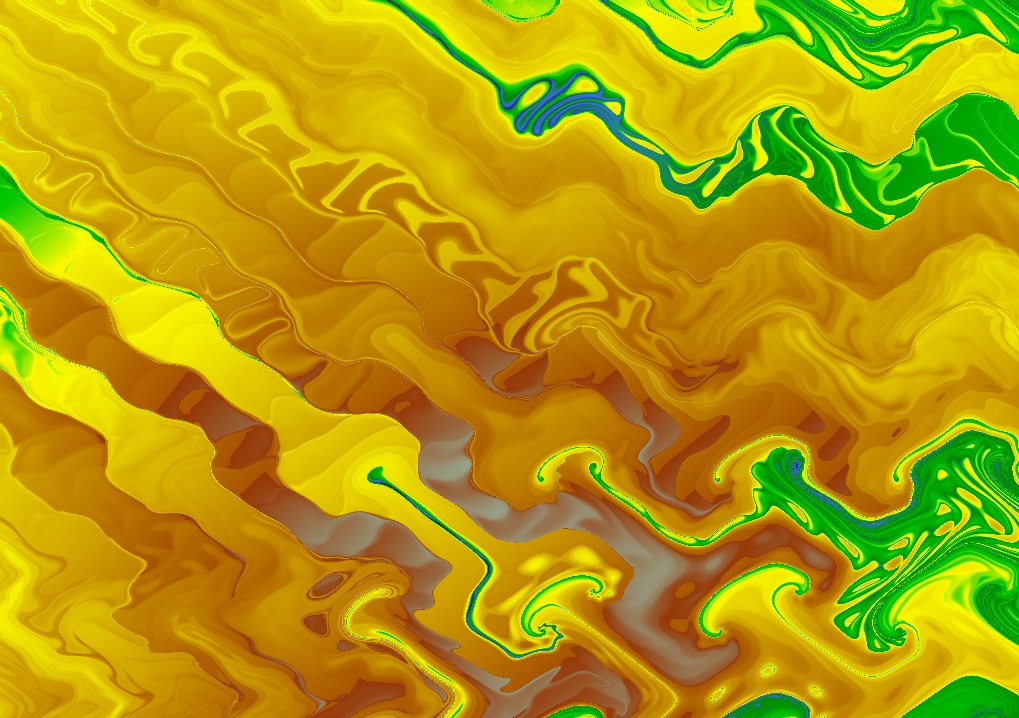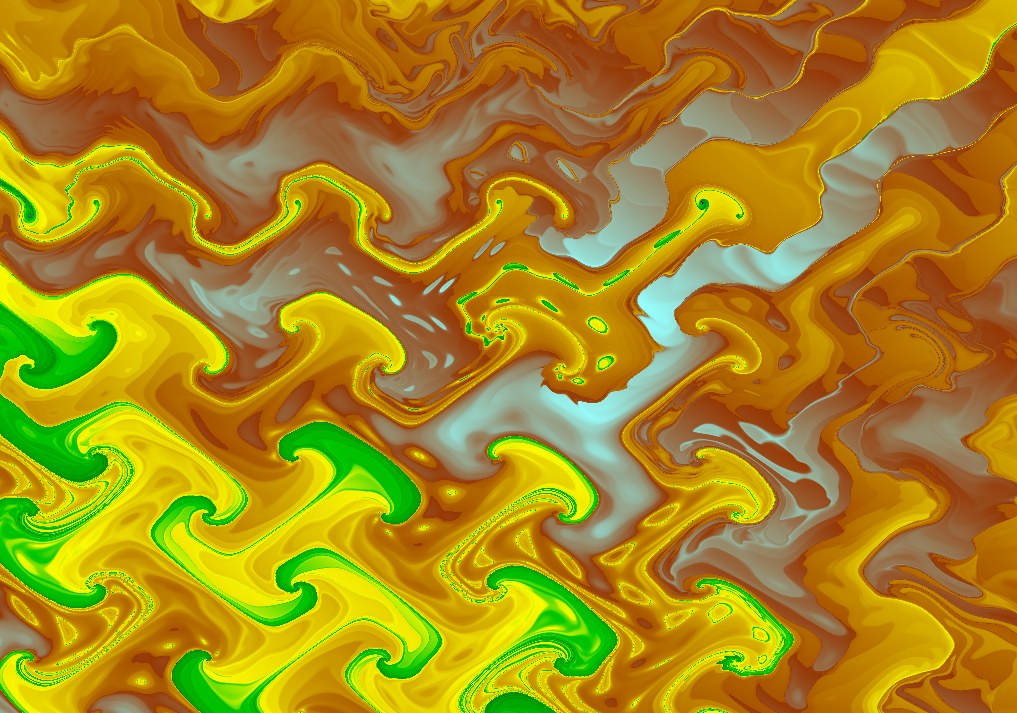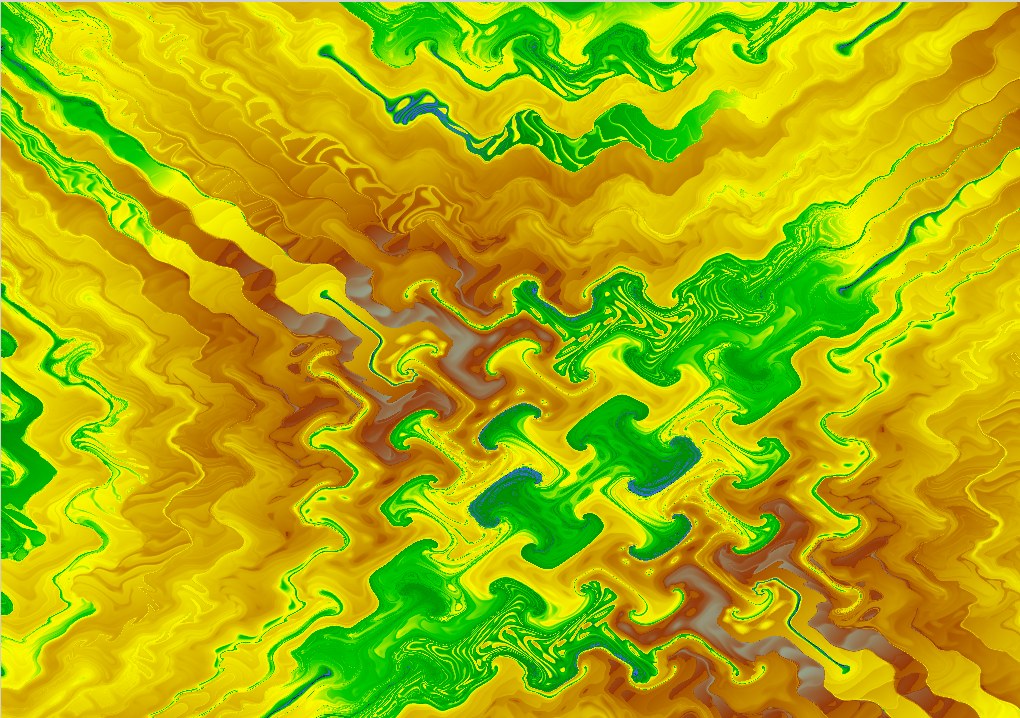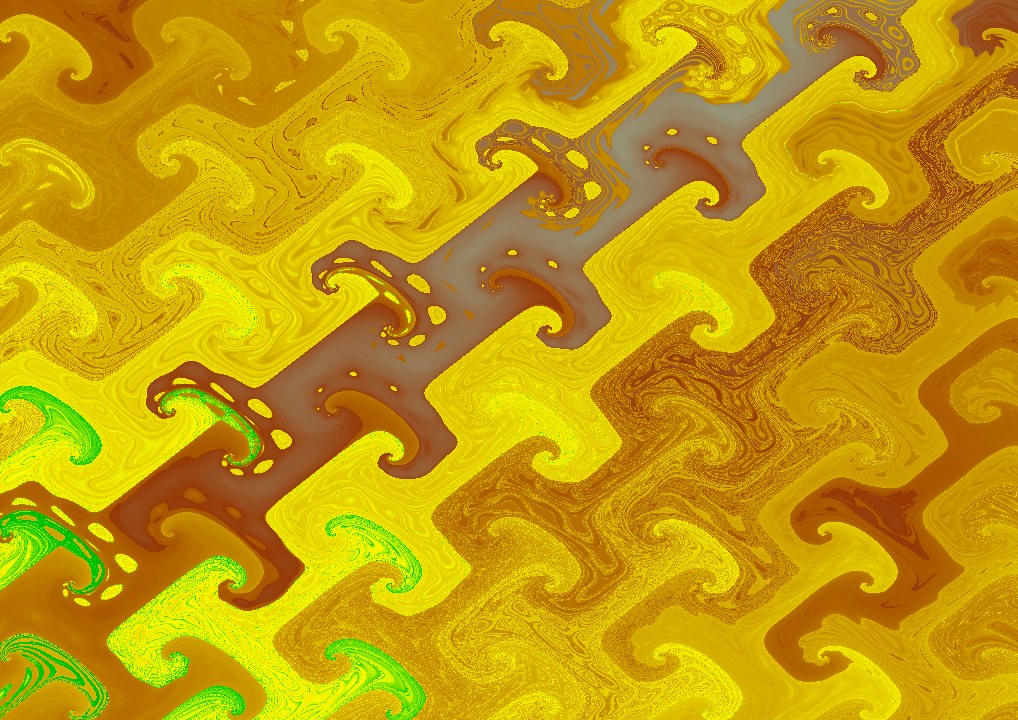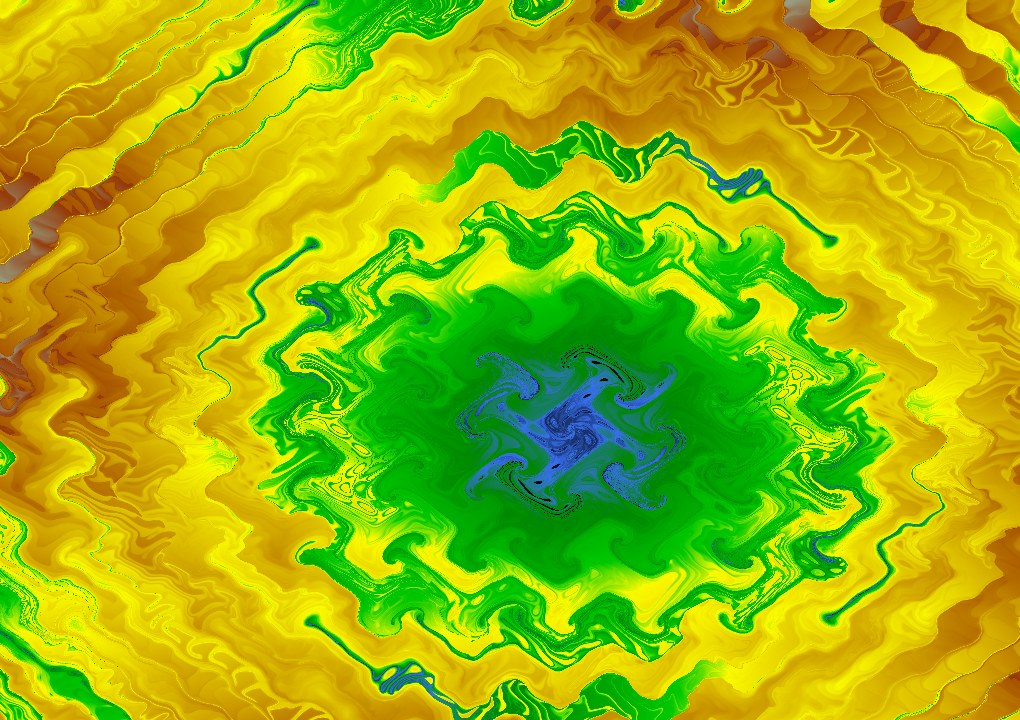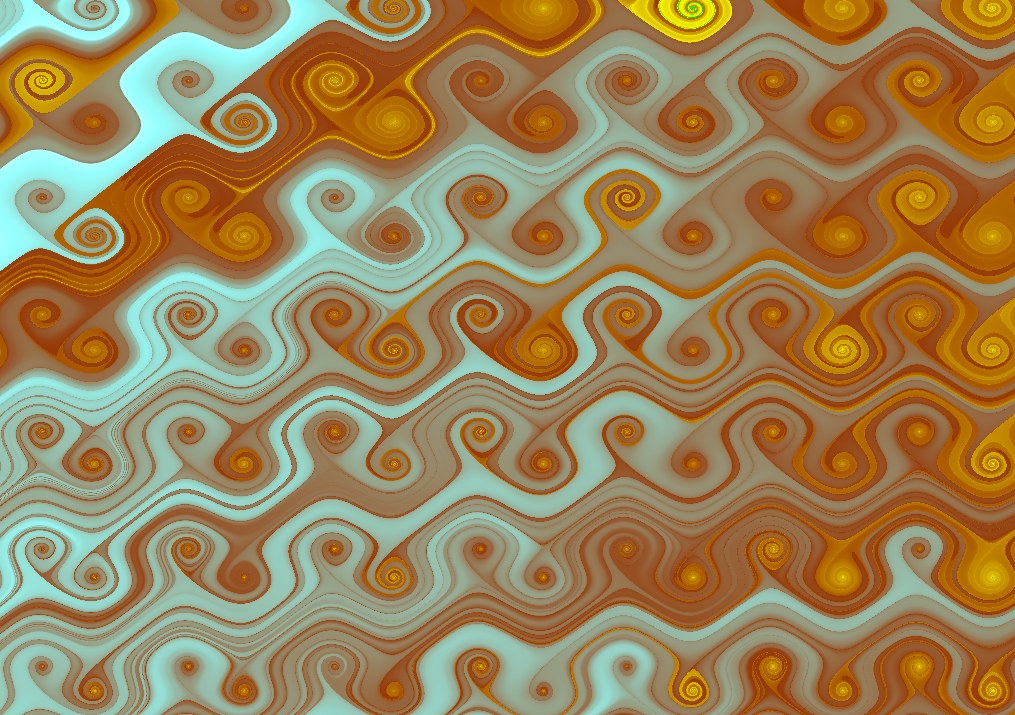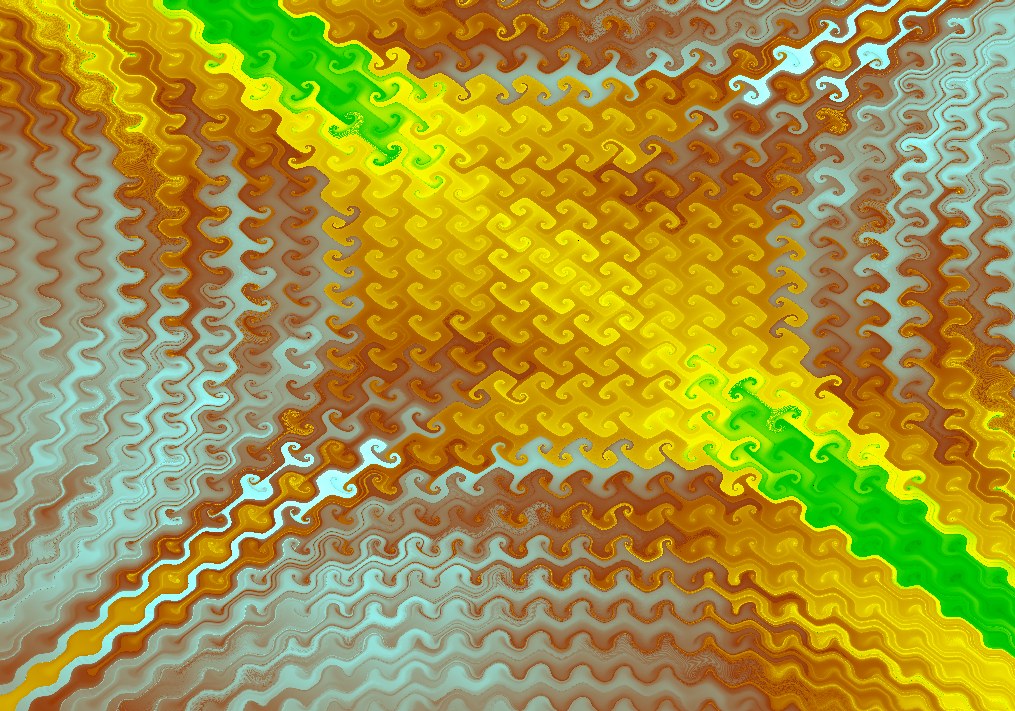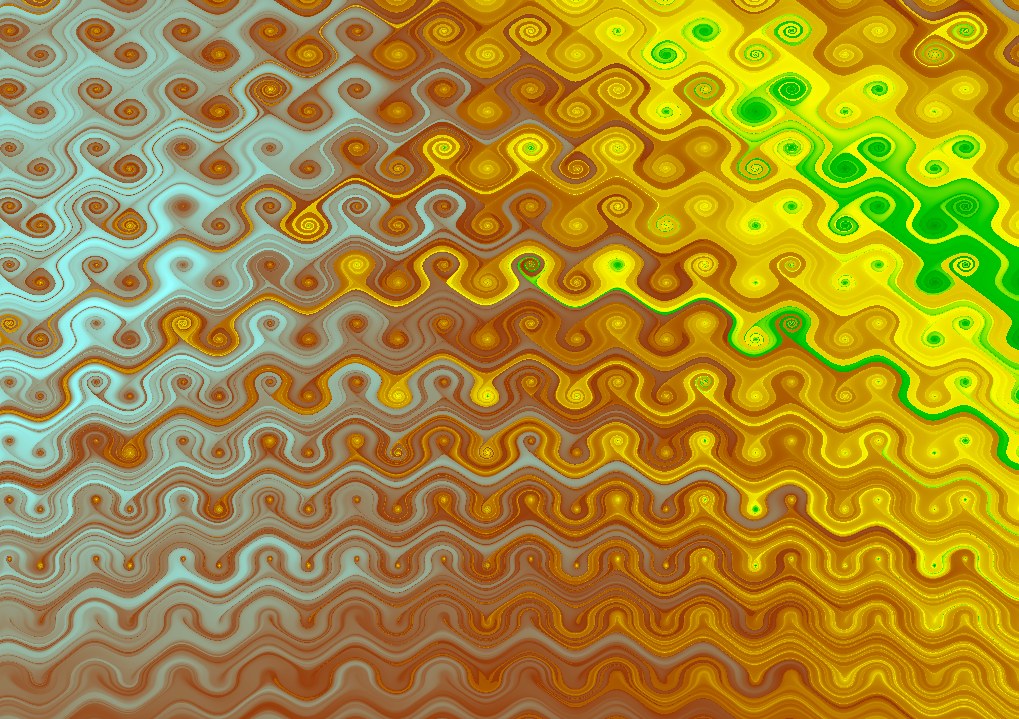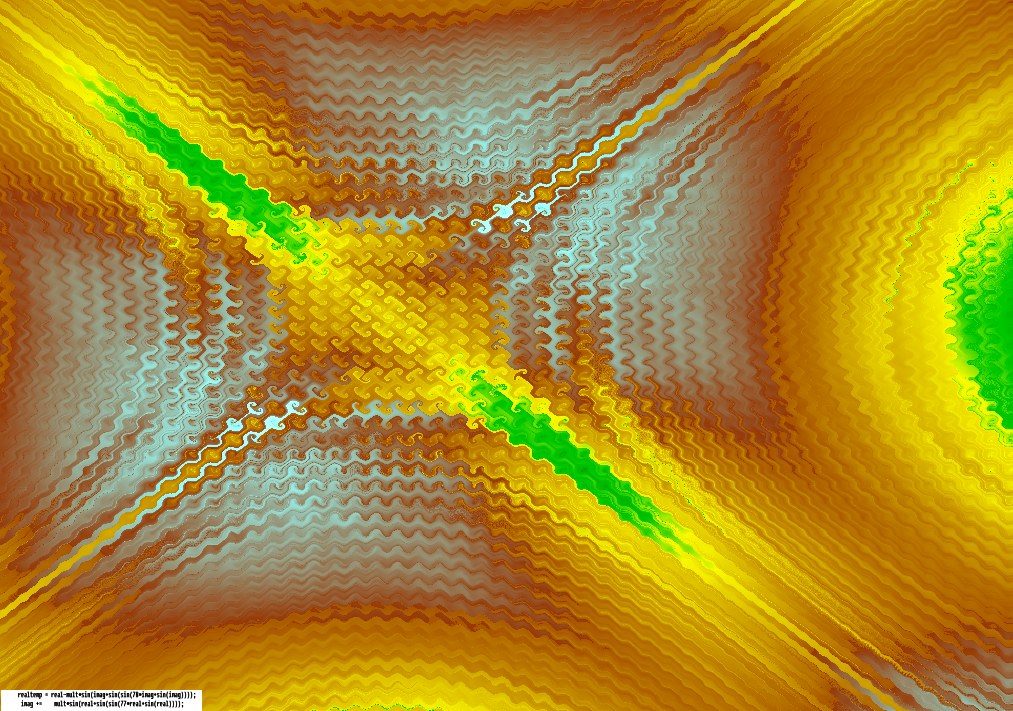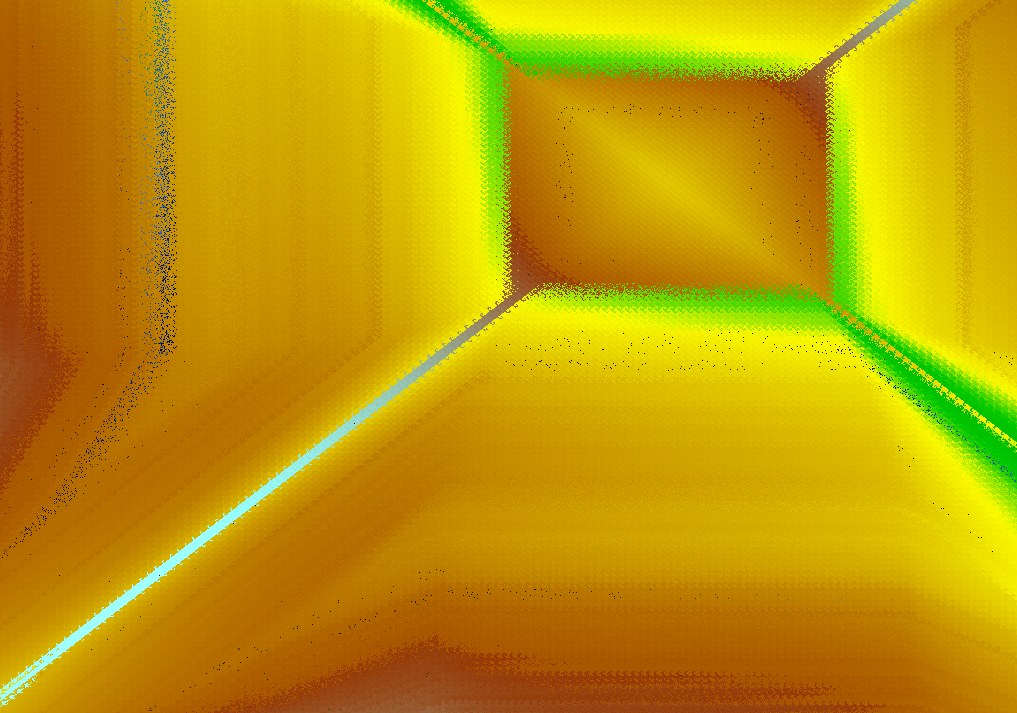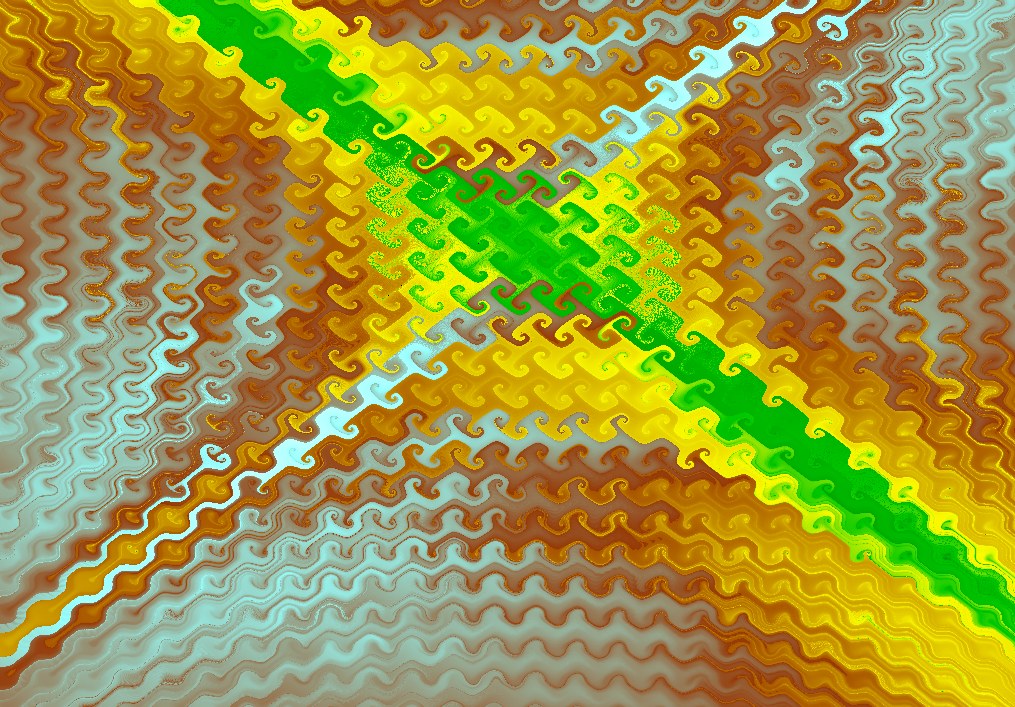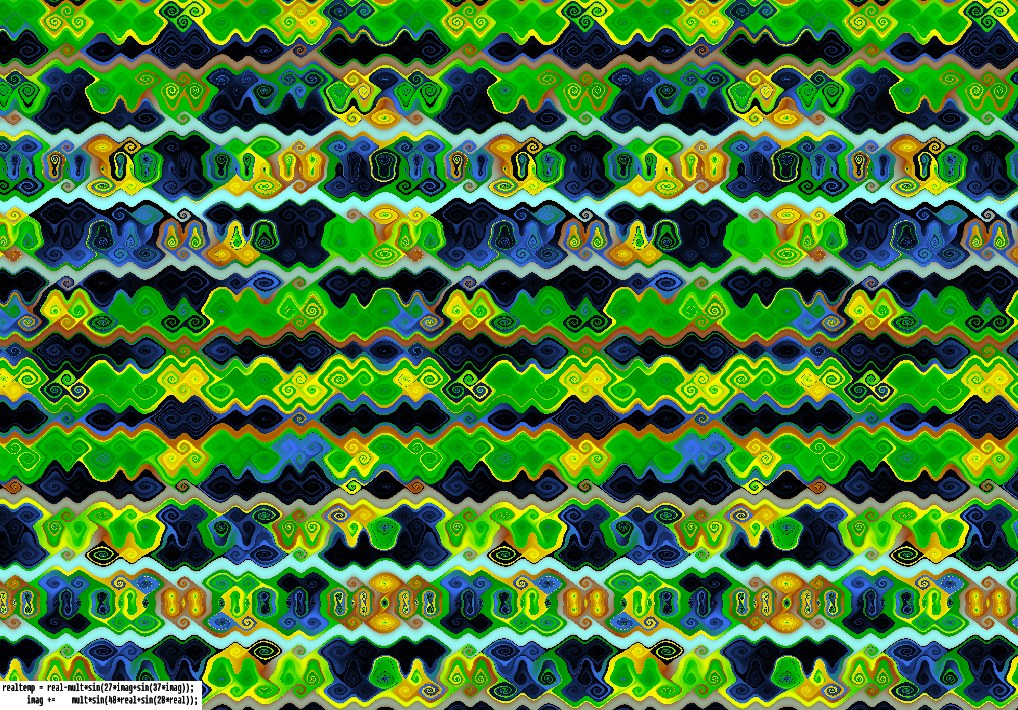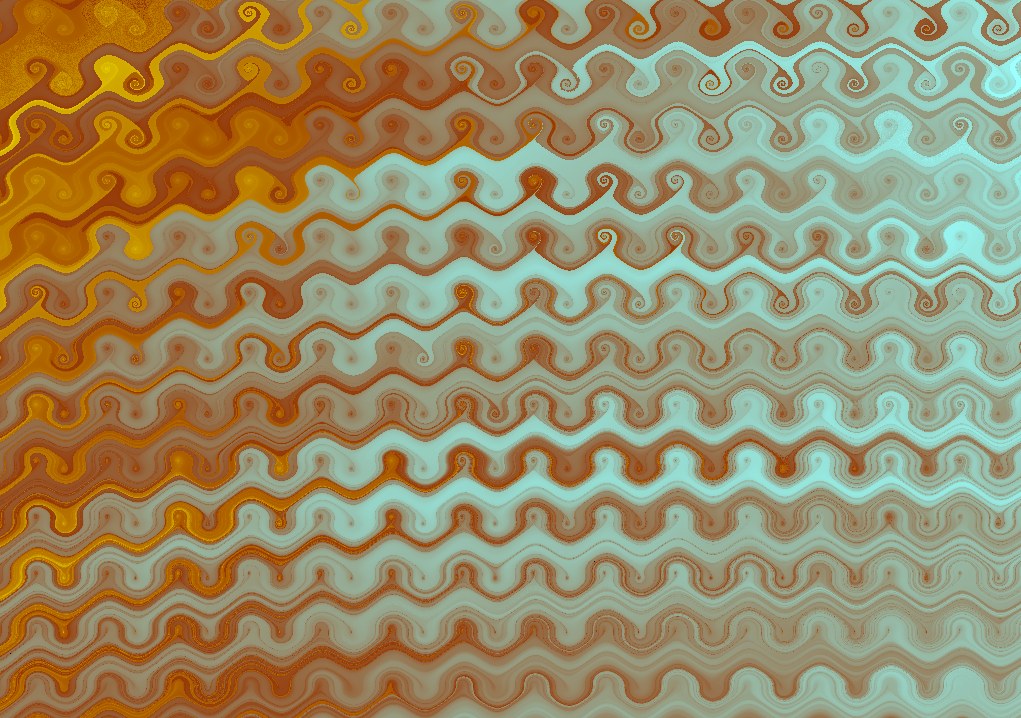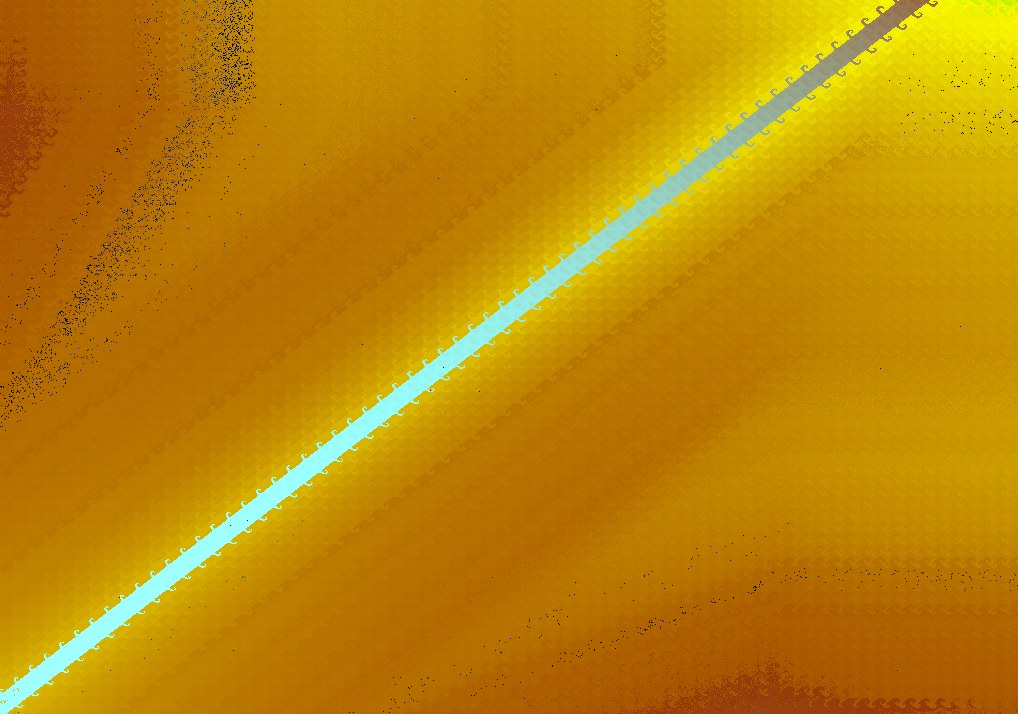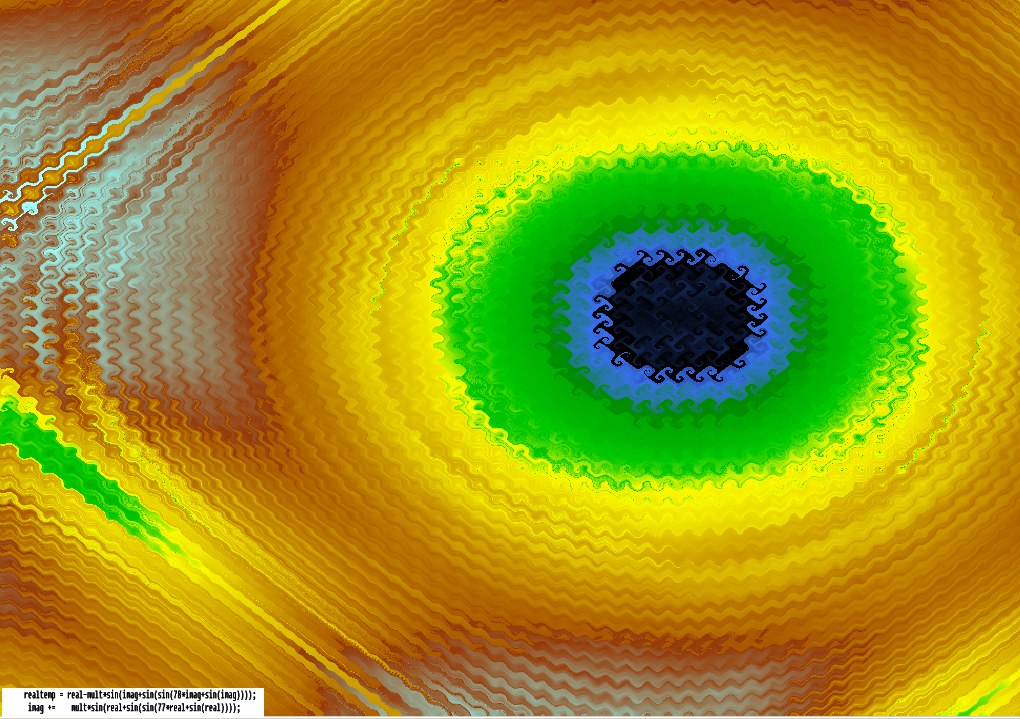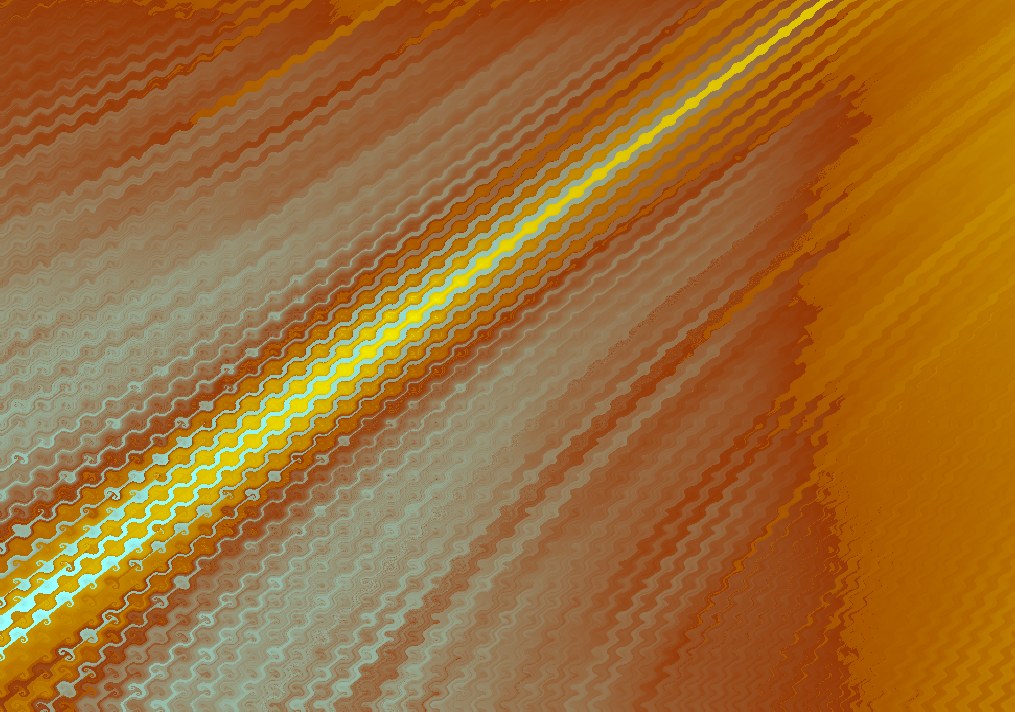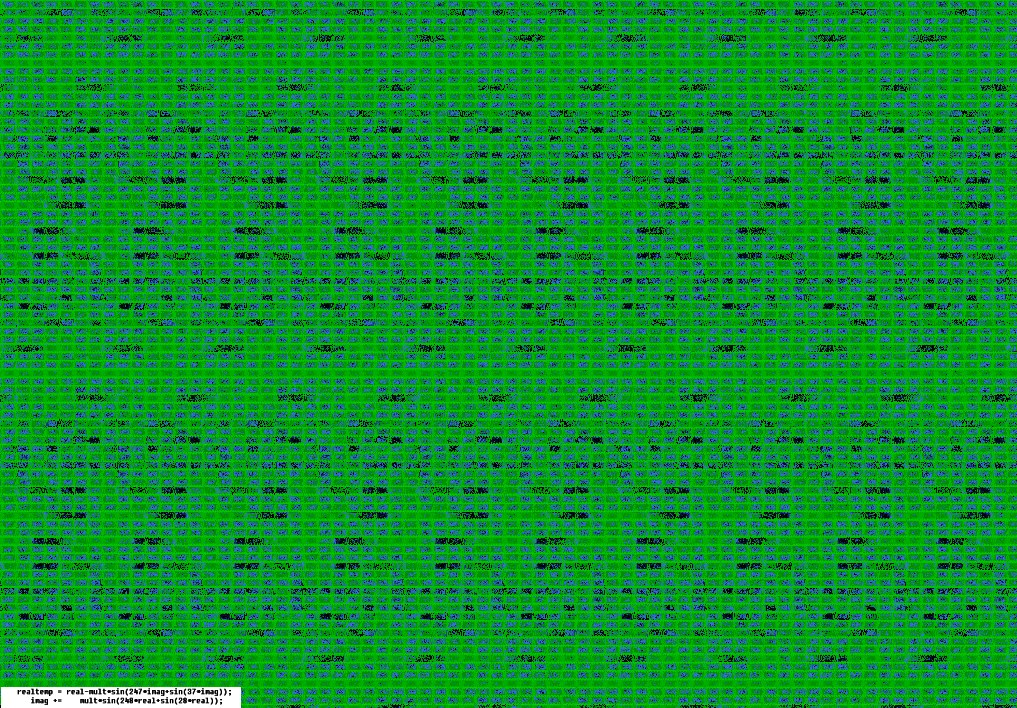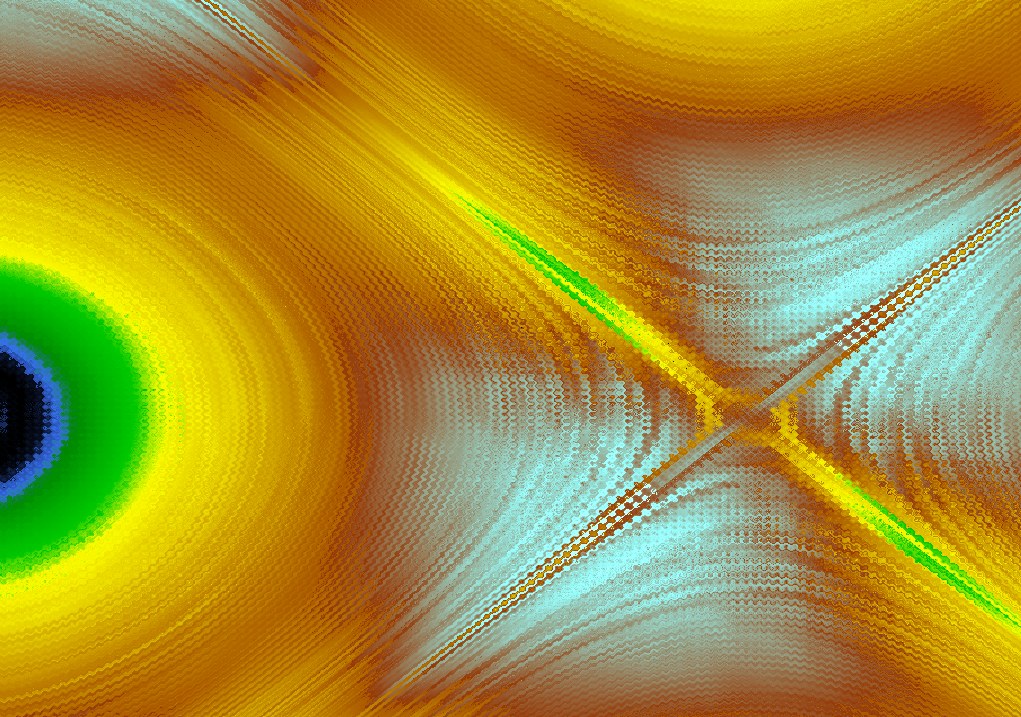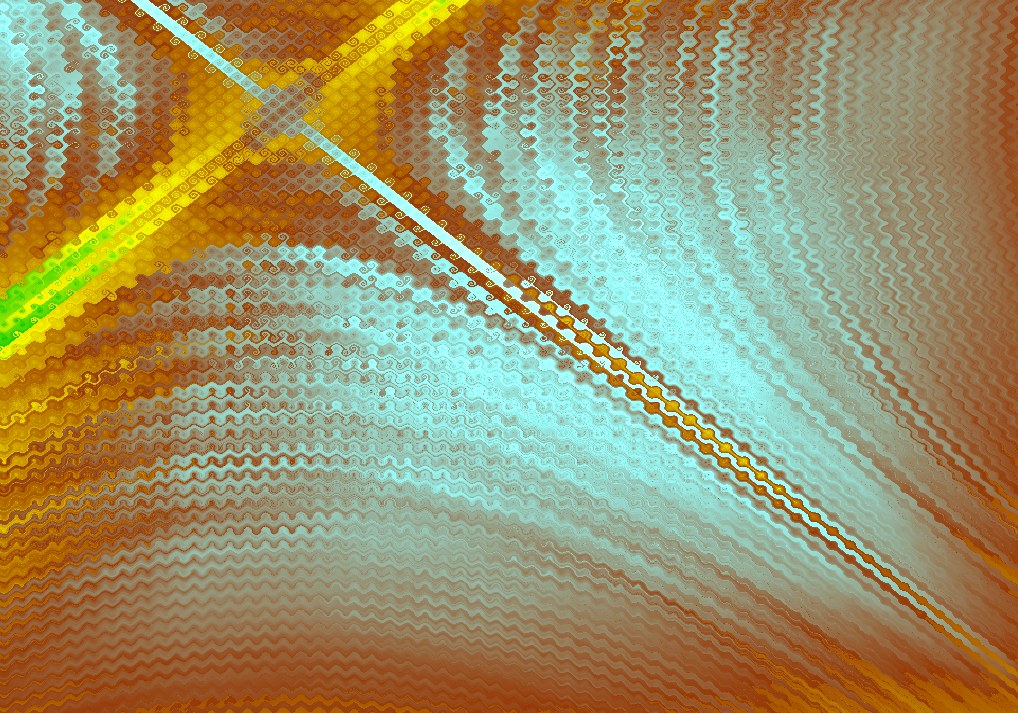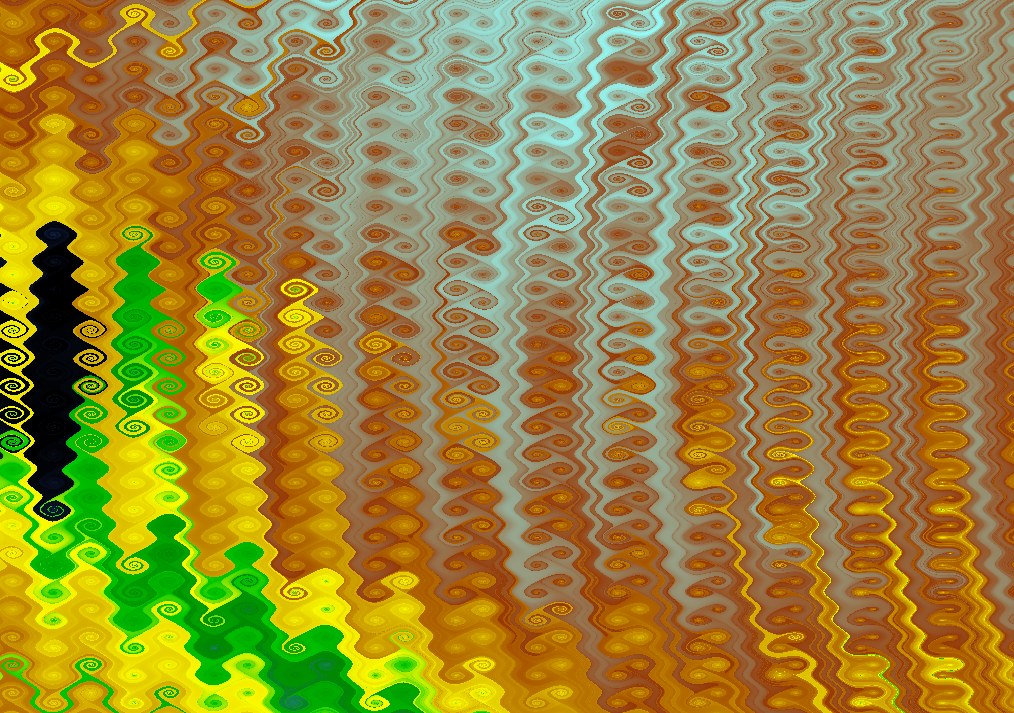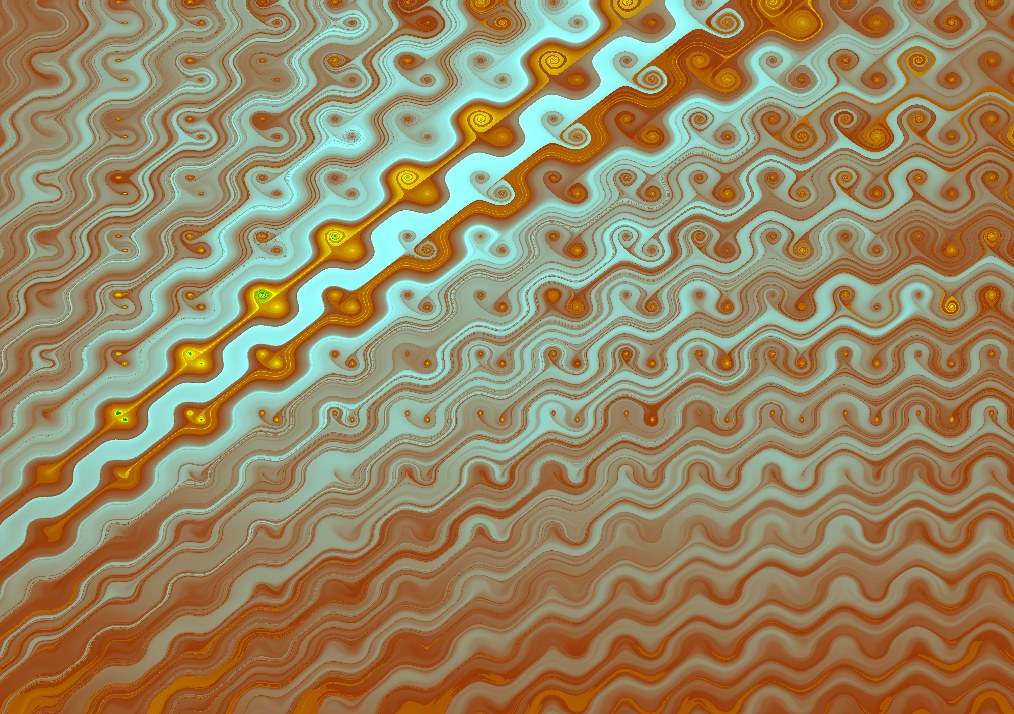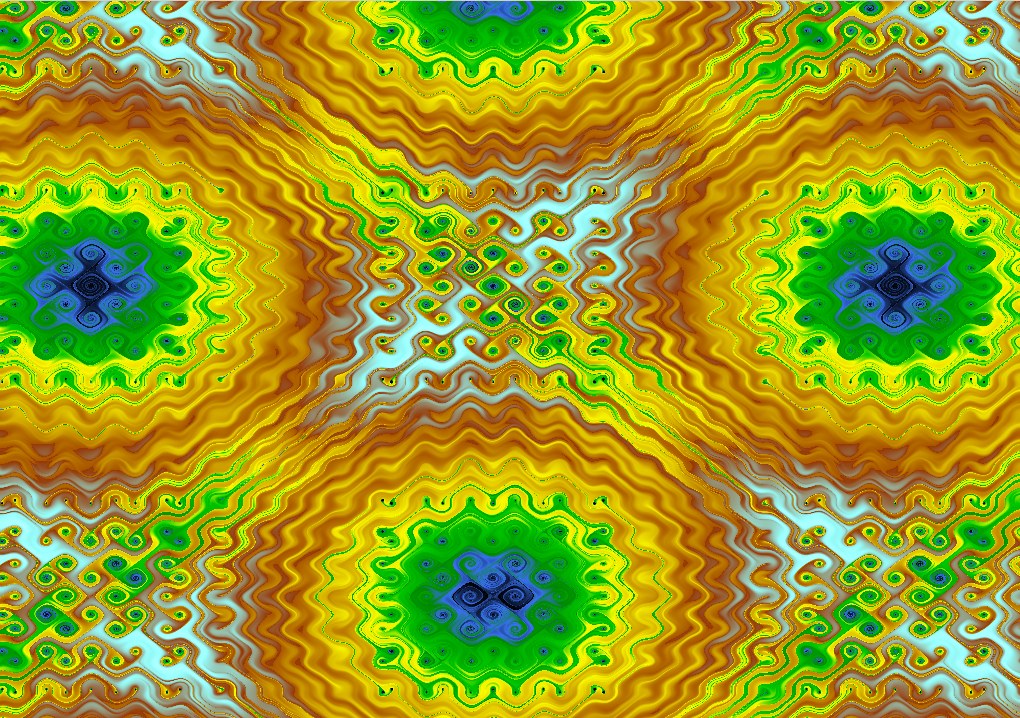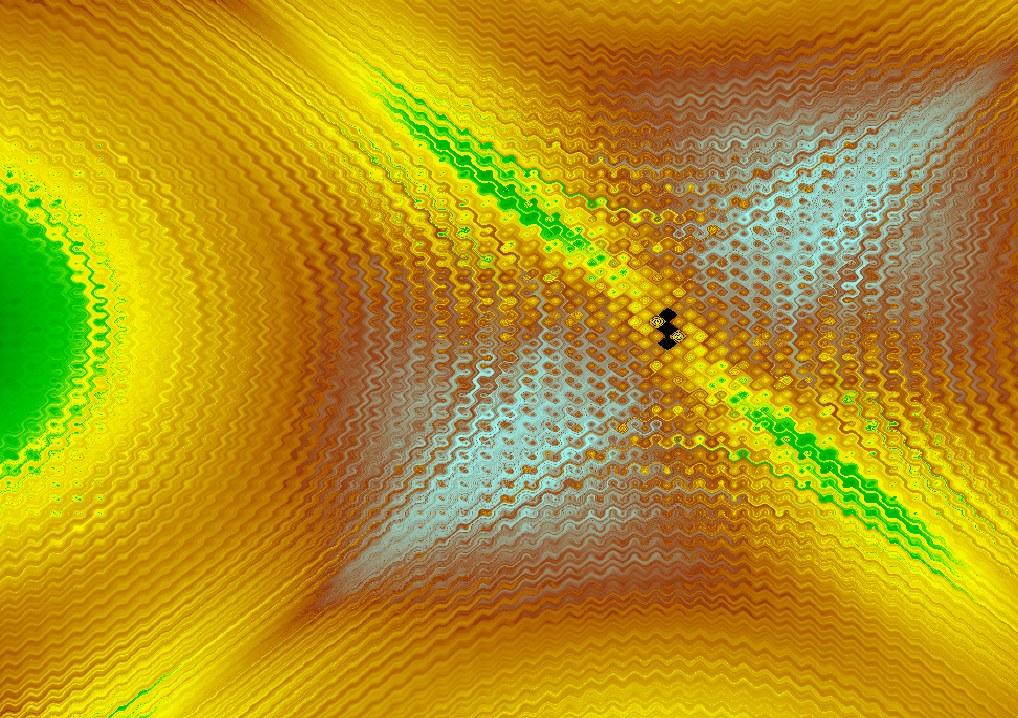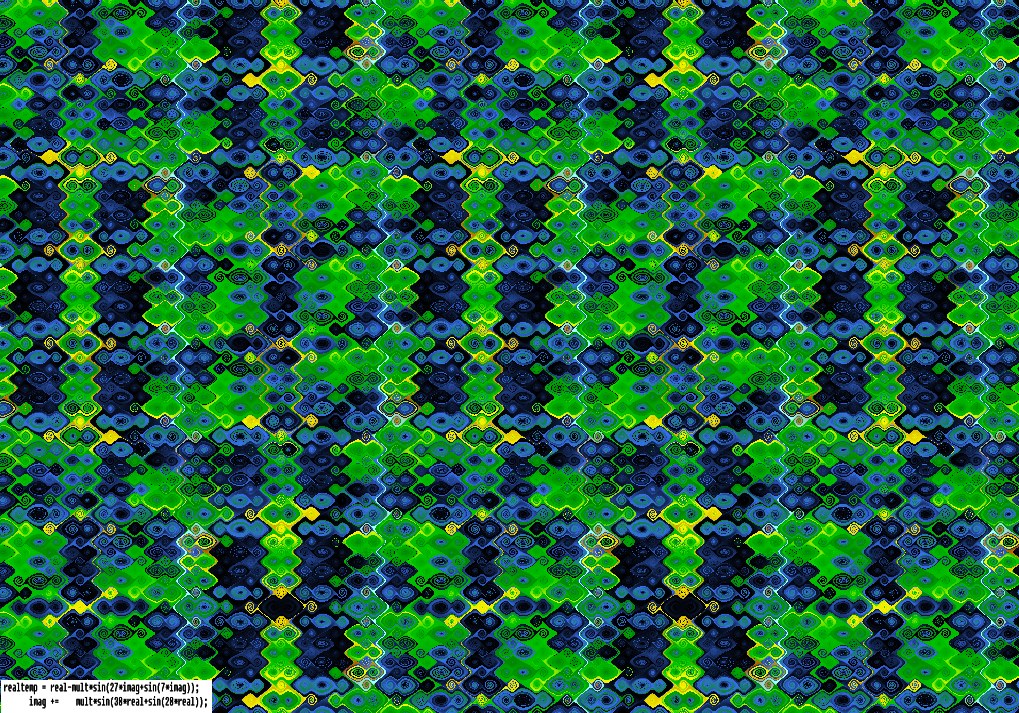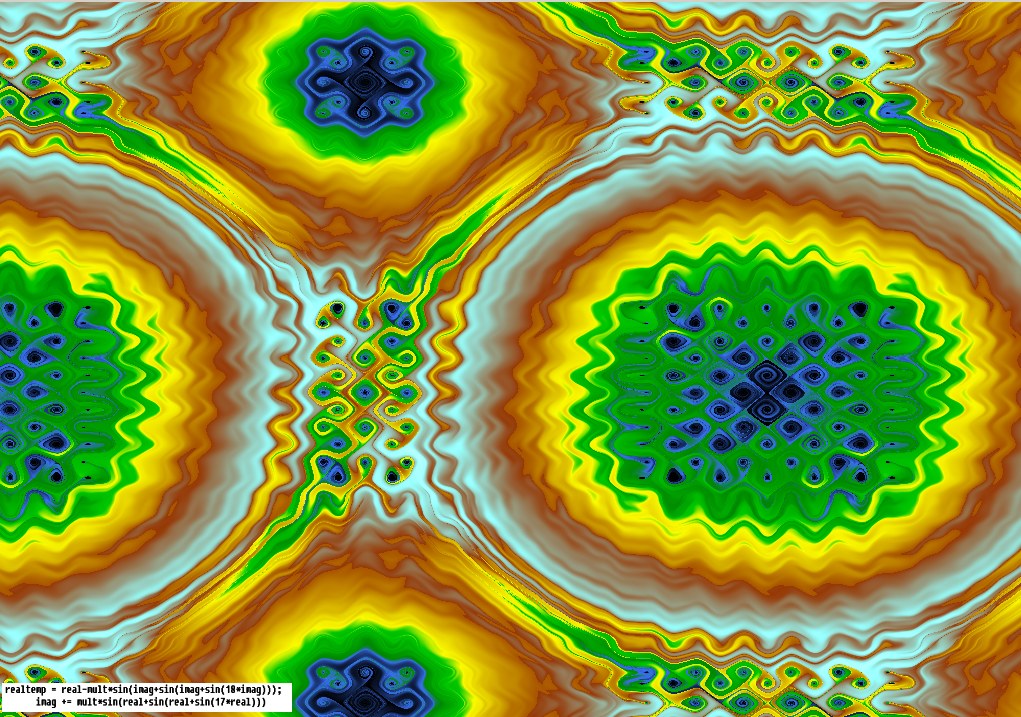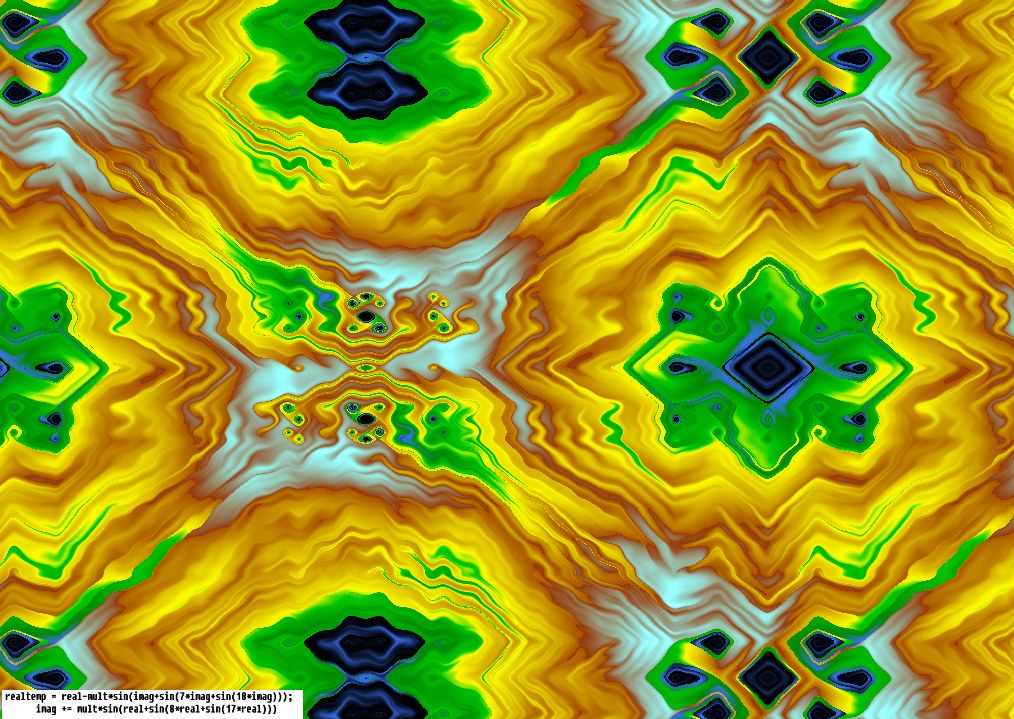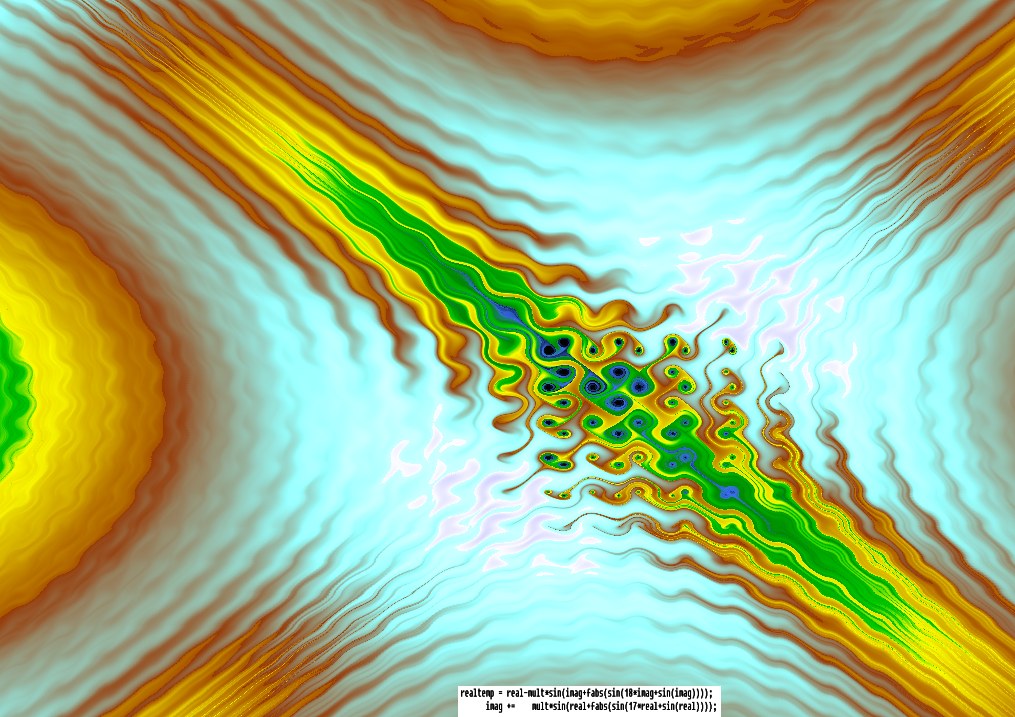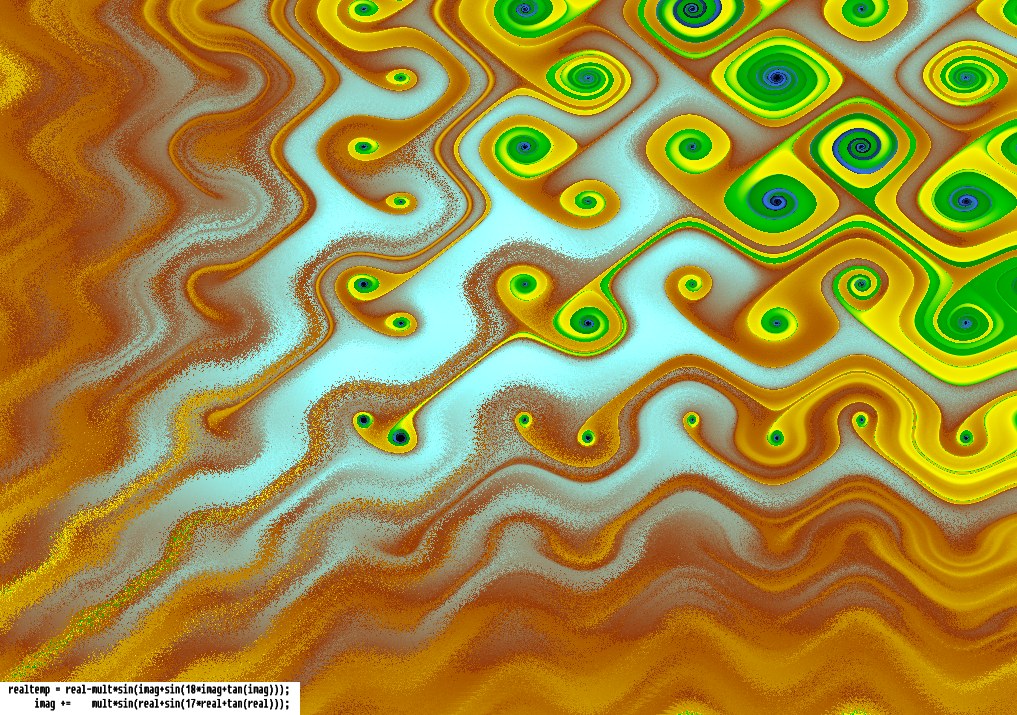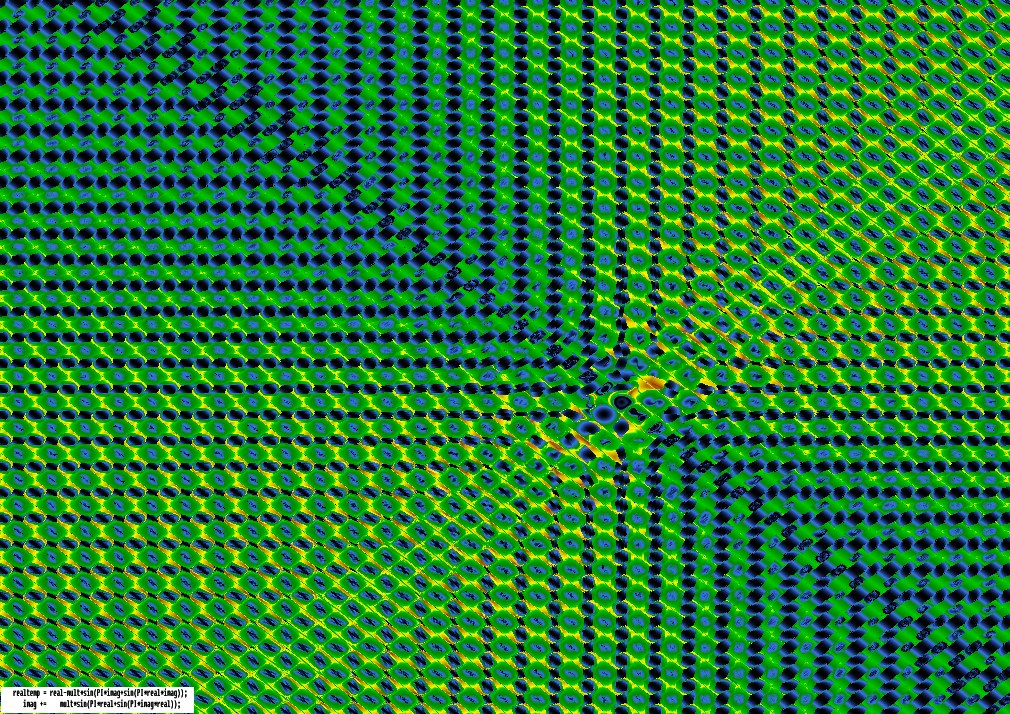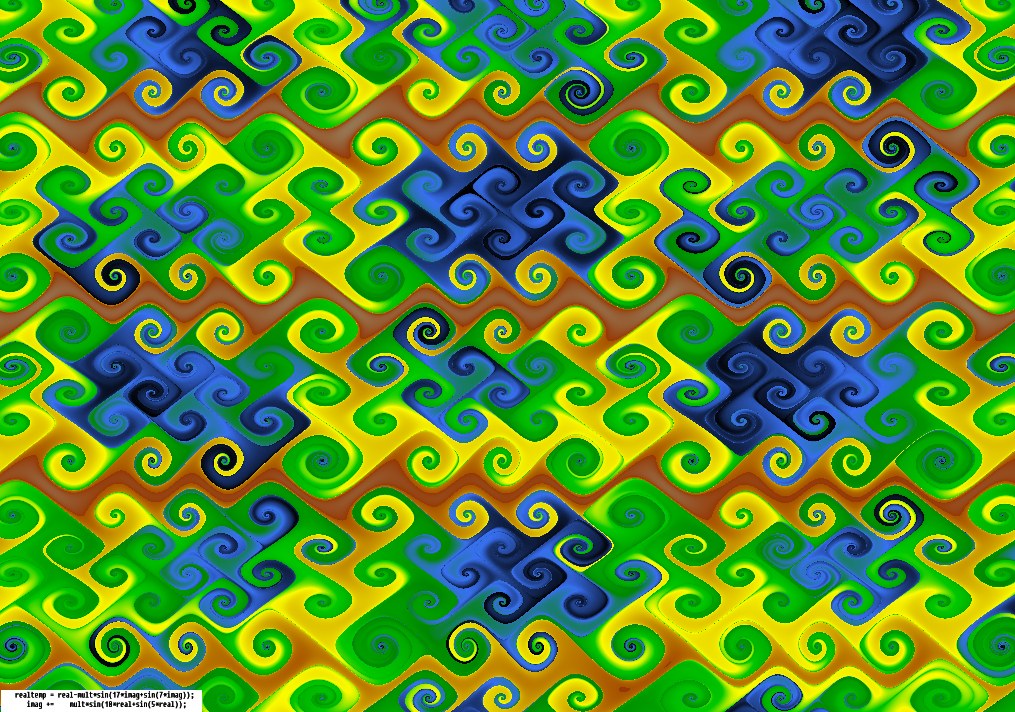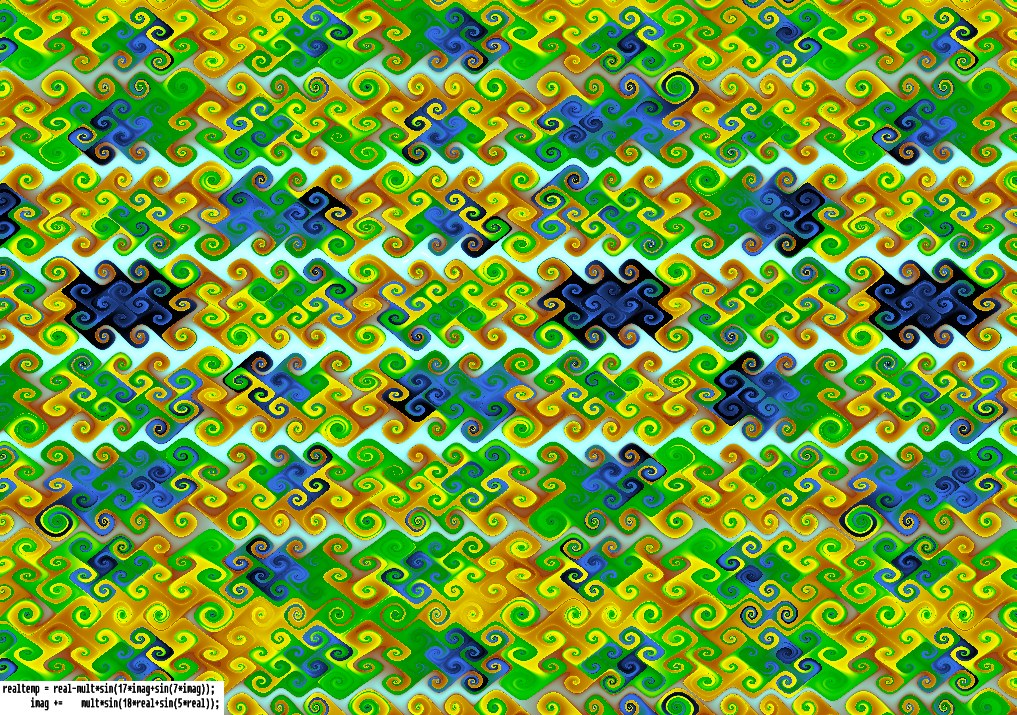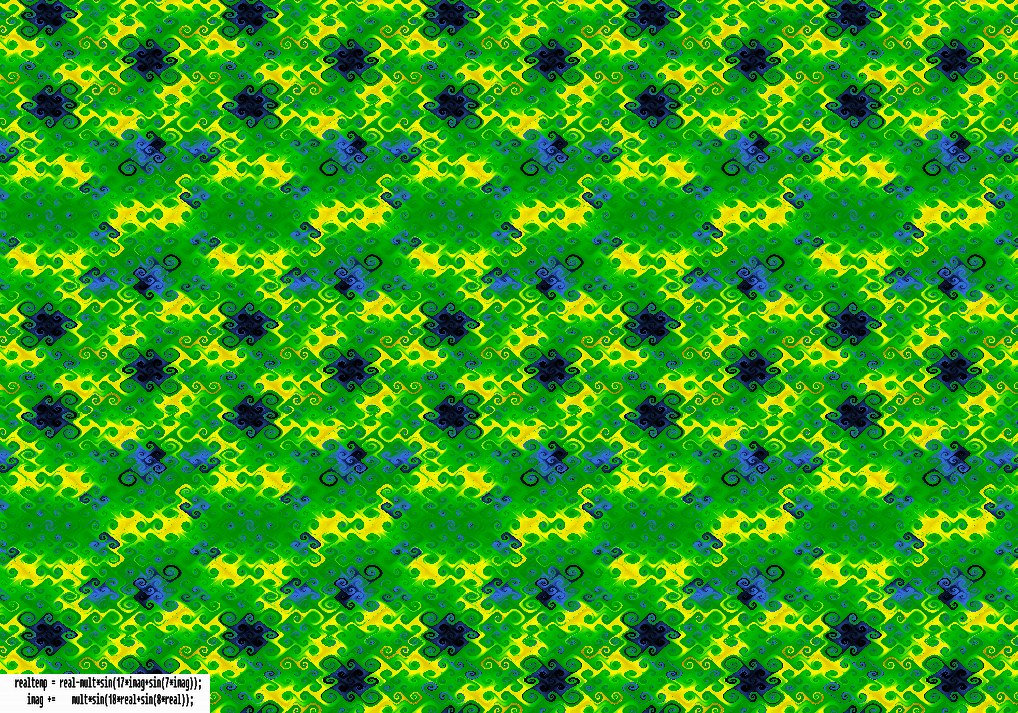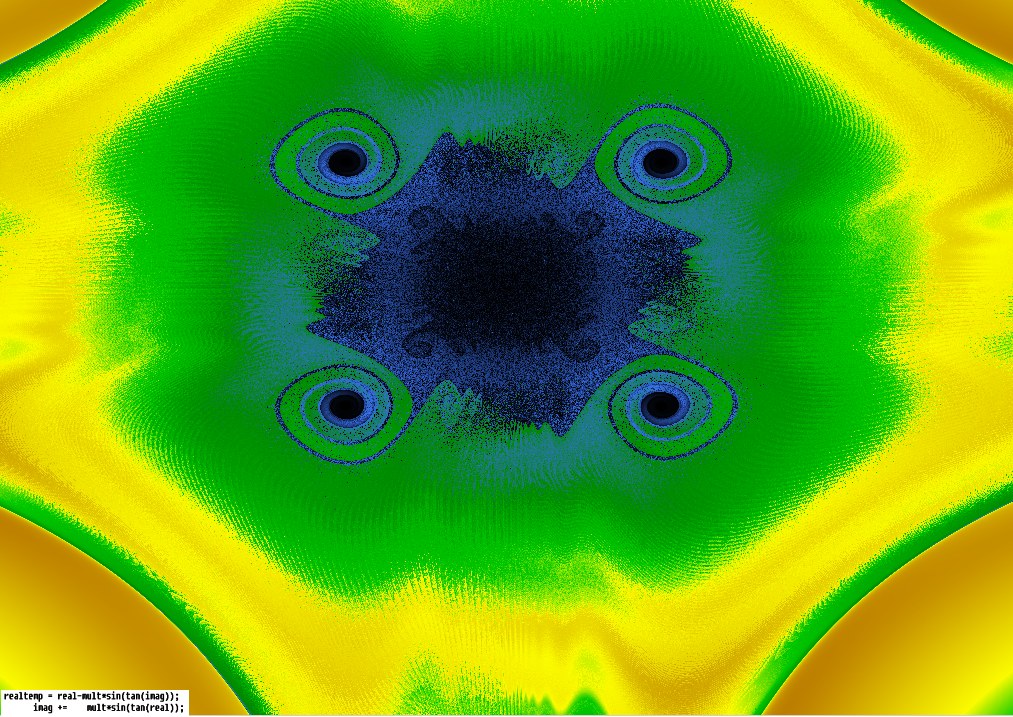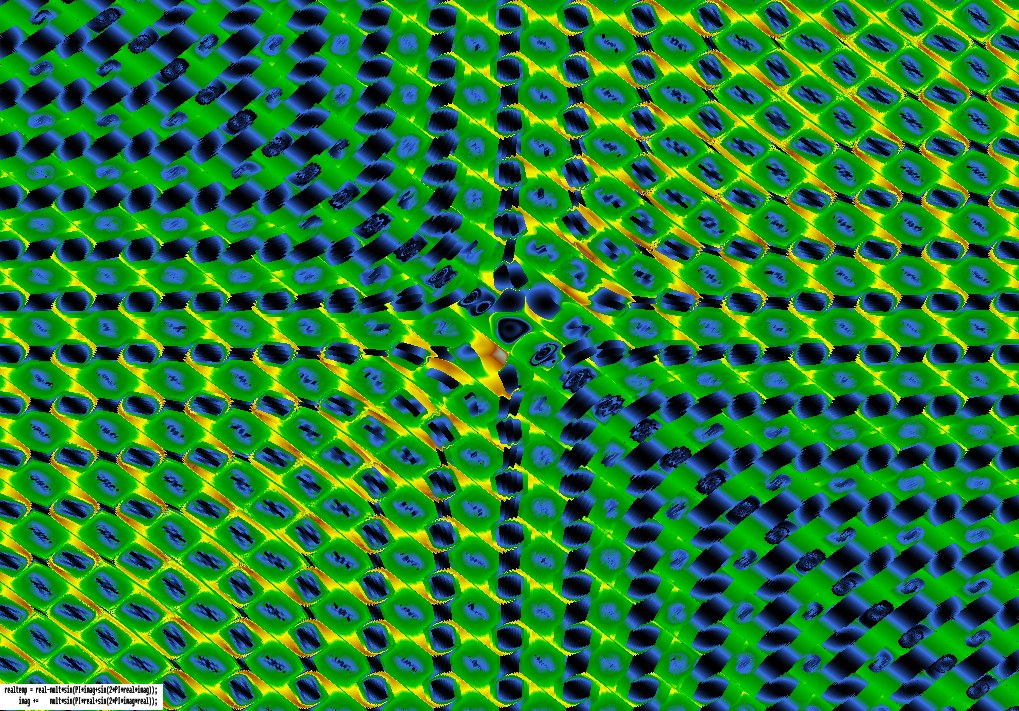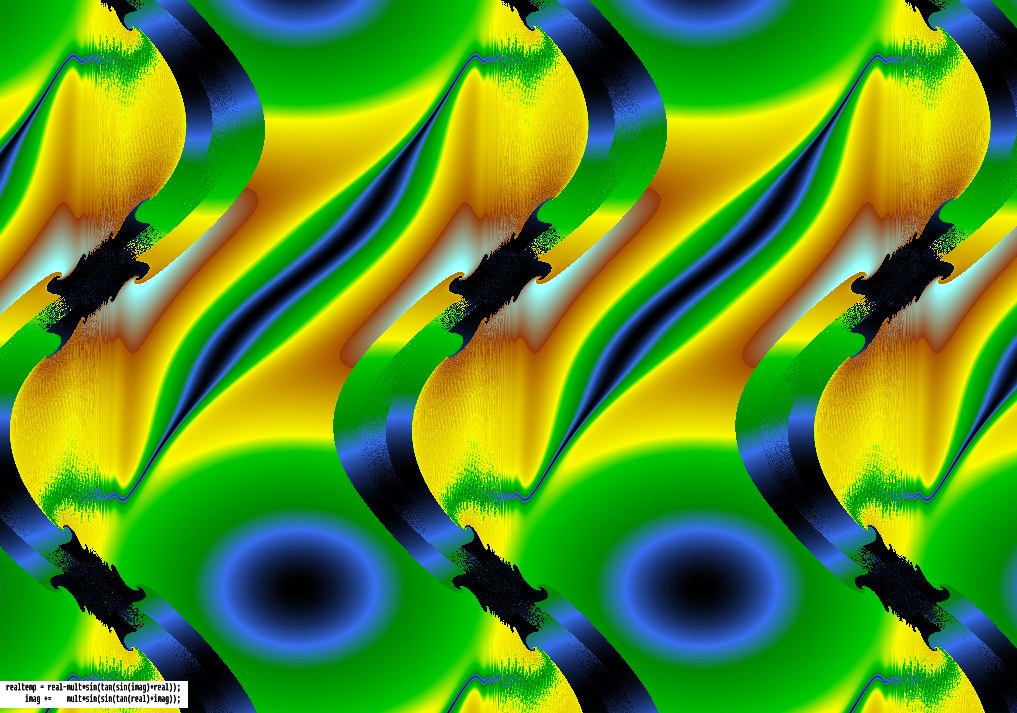These images were made by mucking around with equations producing (to quote from the Pickover chapter that inspired them) “time-discrete phase planes associated with the cyclic systems:
(1) ![]()
In phase space each dimension can represent one of the variables in the differential equation. …Here, these functions are generally of the form often found in frequency modulation synthesis applications:
![]()
By modulating a sine wave (often called the “carrier”) by another with a different frequency (controlled by ![]() ), a large variety of complex waveforms can be generated … Using this technique, a graphically “rich” function can be produced with only a small number of input parameters.
), a large variety of complex waveforms can be generated … Using this technique, a graphically “rich” function can be produced with only a small number of input parameters.
The discretization of Equation ![]() for implementation on a computer takes the following simple form (known as the forward Euler approximation):
for implementation on a computer takes the following simple form (known as the forward Euler approximation):
![]()
where ![]() is a constant known as the step size of the numerical solution. In this section,
is a constant known as the step size of the numerical solution. In this section, ![]() is kept small (
is kept small (![]() ). … Despite the phase portraits’ complexity, they possess universal features shared by entire classes of nonlinear processes. For example, a range of real physical systems can be described by similar systems of differential equations.”
). … Despite the phase portraits’ complexity, they possess universal features shared by entire classes of nonlinear processes. For example, a range of real physical systems can be described by similar systems of differential equations.”![]()
I’ve not used the trajectories of randomly-chosen points, as he does, but instead traced the trajectory of every point on the screen a certain small number of steps, and colouring them according to the distance travelled from the starting point, with colours similar to those used in coloured relief maps – blue(ocean) ![]() dark green
dark green ![]() light green
light green ![]() yellow
yellow ![]() brown
brown ![]() white(snow).
white(snow).
Some of the images have the 2 main equation lines pasted on them, from the program that drew them – e.g. the 11th picture below, the first one with a formula on it, says in C++ :
realtemp = real-mult*sin(27*imag+sin(7*imag));
imag += mult*sin(30*real+sin(28*real));
I made those numbers up pretty much randomly, to see what would happen. This translates into the above style as:
![]()
![]() Computers, Pattern, Chaos and Beauty: Graphics from an Unseen World – Clifford Pickover, 1990
Computers, Pattern, Chaos and Beauty: Graphics from an Unseen World – Clifford Pickover, 1990
